Eighteenth-century apothecary apprentices compounded many different forms of medicine during their training. As Apothecary Assistant learning the trade, I do the same, using period formulas and techniques. Recently, I made Acetum Rosatum, or Vinegar of Roses.
This medicine is compounded from just two ingredients: vinegar and red rose petals. Vinegar of Roses was used to treat “some kinds of head-achs.” It was applied by rubbing into the skin in the head and temple areas of the body.
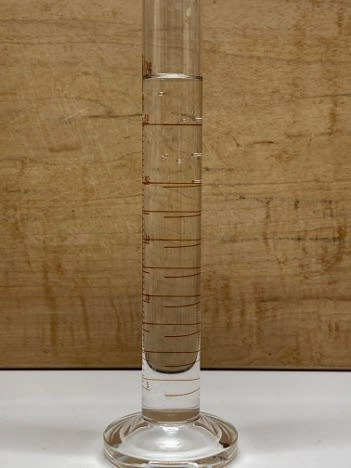
Vinegar, or “acetum” in Latin, was produced by fermenting liquor. The type of liquor fermented mattered:
Wine vinegar is considerably purer than that
prepared from malt liquors; the latter, however
acid and fine, contains a large portion of a
viscous mucilaginous substance.
The stronger the wine fermented, the stronger and better the vinegar yielded. Vinegar was not typically used as a solvent for medicines because its acidity often altered the virtue of the substance(s) dissolved in it. For a few medicines, however, vinegar “excellently assists.” Rose petals are one such material.
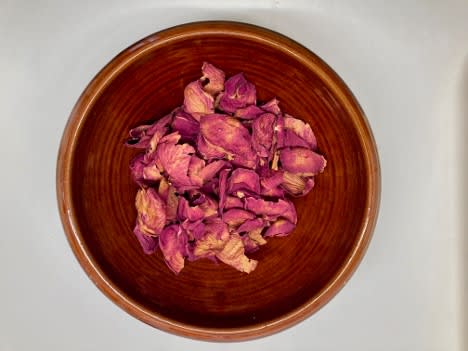
The recipe for Vinegar of Roses calls for using the petals of red rose, or Rosa Rubra. The petals should be dried before use. These roses were also called Rosa Gallica. Rosa Damascena, the Damask rose, was also used to make medicine. Red rose was said to possess a drying virtue, whereas Damask roses were purgative and cordial. “Cordial” meant it raised one’s spirits and strength.
In this series, I have yet to show a formula that I am using. Congratulations! You have, at this point in your vicarious education, advanced far enough that I think it is time. Here is the formula for Vinegar of Roses:
Take of Red roses, clipped from the white heels, and dried, ℔ i
Strong vinegar, ℔ viii
Easy enough, right? Well, perhaps the symbols have you a bit stumped, especially since the identical symbol is used for the weight of roses and the volume of vinegar. You likely figured out that the first “℔” stands for “pound,” since if you removed the horizontal line through it you have the modern symbol for pound. That second one though? As a volume measure it doesn’t stand for pound. Rather, it is the symbol used for “pint.” In this case the recipe calls for 8 pints, or one gallon.
Now, if I were an apprentice to Dr. Pasteur or Dr. Galt I might make this large a volume of medicine. For reproduction purposes, I don’t need so much. If I collected enough rose petals to have one dried pound, the horticulturists here at Colonial Williamsburg would be pretty upset with me. Since I do NOT want to incur their wrath, I proportionally reduced the quantity of ingredients.
The first step was to convert one pound of rose petals into ounces. Even this conversion is tricky because in the 18th-century Troy weight system there were 12 ounces in one pound.
℔ i = ℥ xii
℥ is the symbols for ounces. I then converted 12 ounces to drams, there being eight drams in one ounce:
℥ xii = ʒ xcvi
ʒ is the symbol for drams. Finally, I calculated 1/64th this weight:
ʒ xcvi x 1/64 = ʒ iss
Here “ss” represents “1/2.” For my medicine, then, I used 1 1/2 drams of dried rose petals.
Next up is reducing the volume of vinegar. The wine-measure system was utilized for volumes. First, I converted pints into cups, there being two cups in a pint:
℔ viii = 16 cups
Next, I calculated 1/64th this volume:
16 cups x 1/64 = 1/4 cup
I used 1/4 cup of vinegar to make my medicine.
I apologize profusely for this math, but I did want you to understand that my apprenticeship is not always fun and games. There are some days that my brain hurts!
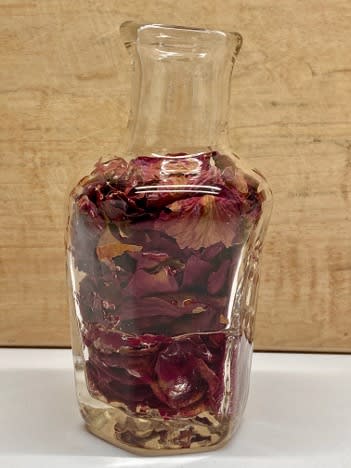
Vinegar of Roses is not a medicine one can make in a hurry. The petals must soak in vinegar, in the sun, for 40 days. This requires some anticipation by the apprentice of when the medicine will be needed.
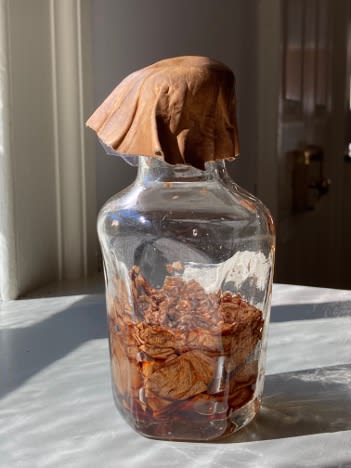
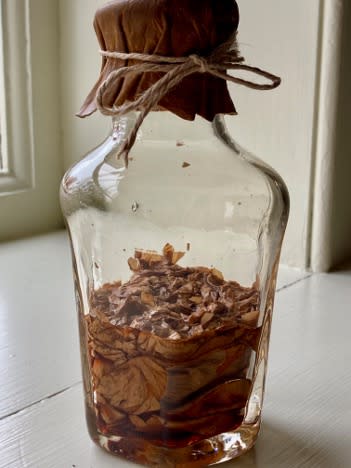
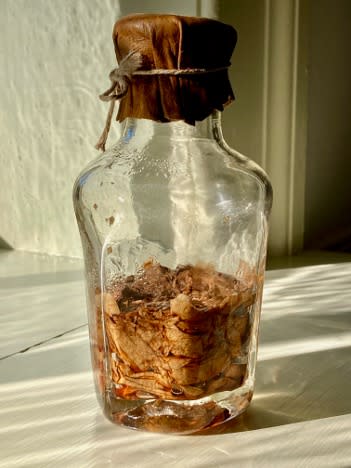
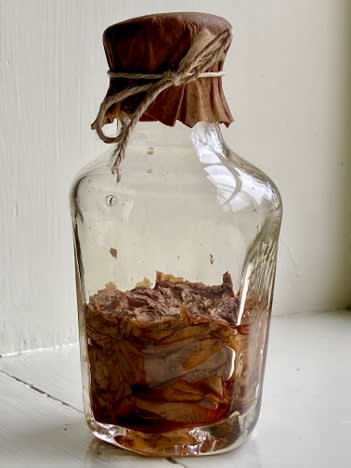
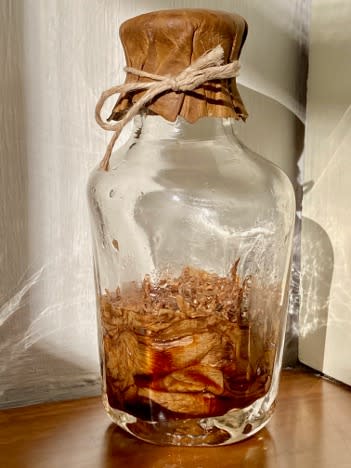
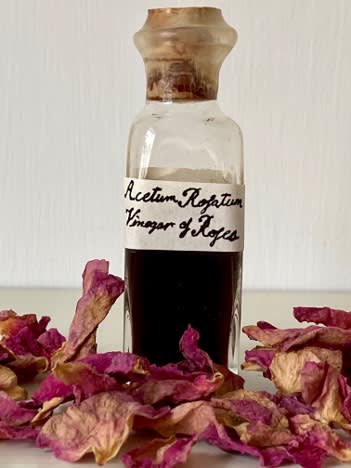
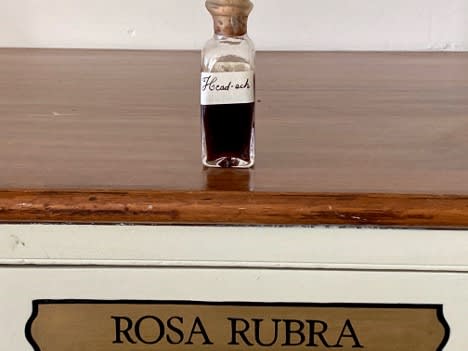
Mark is the Apothecary Assistant, learning the trade as would a young man in the eighteenth century. This series documents one aspect of his education: compounding medicine.
Resources
William Lewis, The New Dispensatory […]. (London: for J. Nourse, 1753).
William Woodville, Medical Botany […]. (London: James Phillips, 1792), ix.
Colonial Williamsburg is the largest living history museum in the world. Witness history brought to life on the charming streets of the colonial capital and explore our newly expanded and updated Art Museums of Colonial Williamsburg, featuring the nation’s premier folk art collection, plus the best in British and American fine and decorative arts from 1670–1840. Check out sales and special offers and our Official Colonial Williamsburg Hotels to plan your visit.
